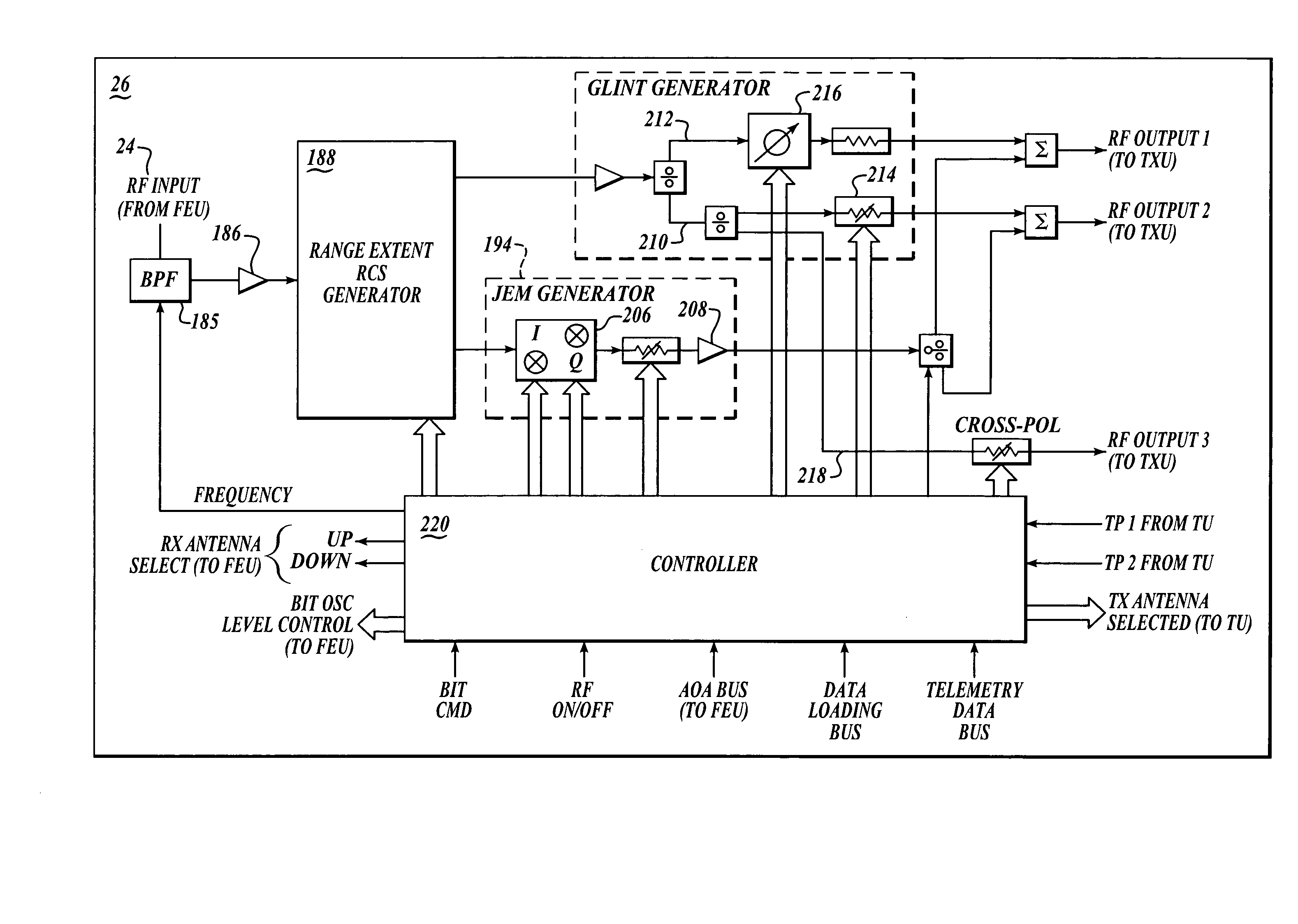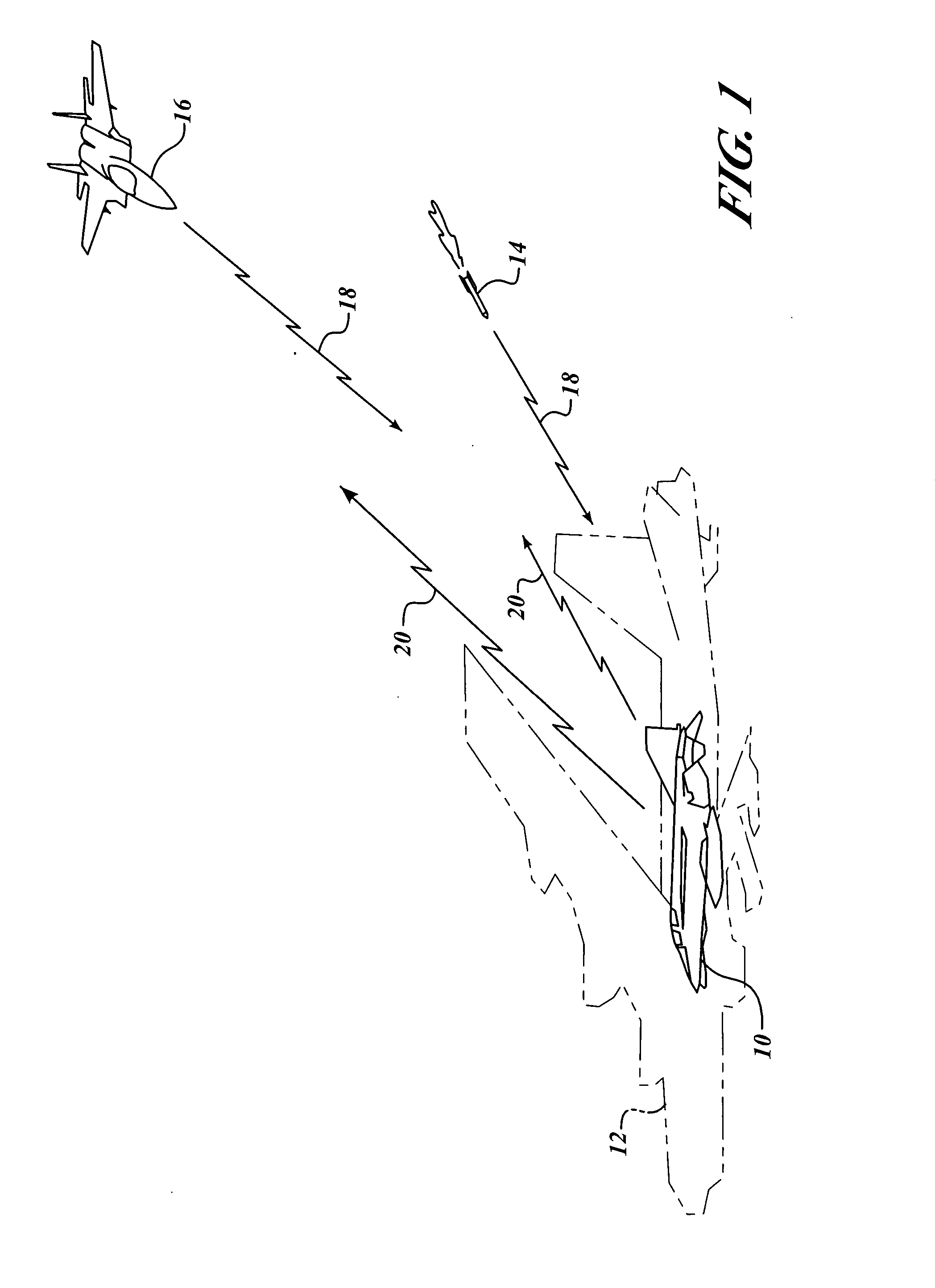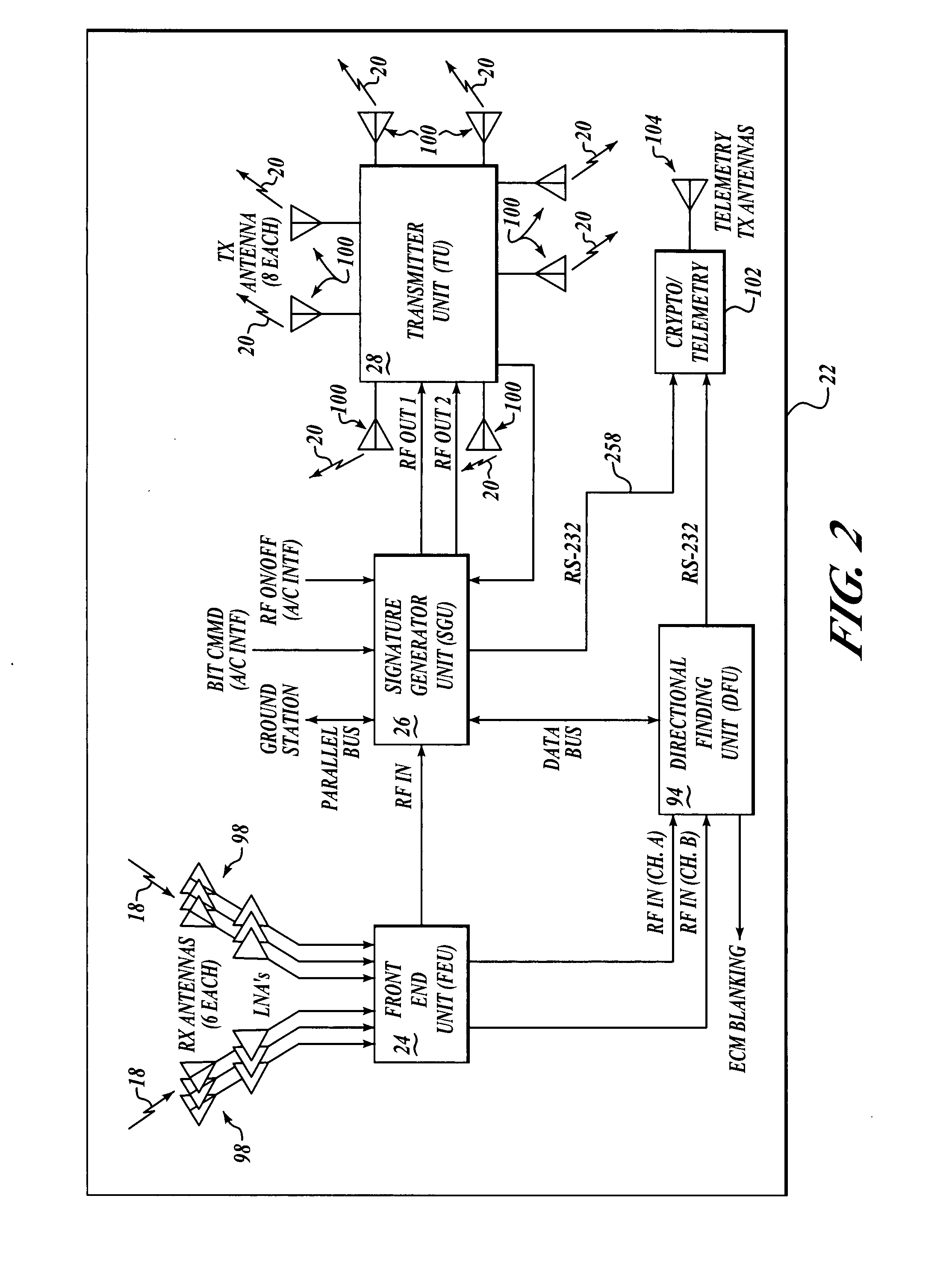Radio frequency signature augmentation system
- Summary
- Abstract
- Description
- Claims
- Application Information
AI Technical Summary
Benefits of technology
Problems solved by technology
Method used
Image
Examples
Embodiment Construction
[0043] Embodiments of the present invention simulate a variety of threat platforms with a sufficiently high fidelity level for a realistic evaluation of weapon systems. Advantageously, simulation performed by embodiments of the present invention includes emulation as well as augmentation. Referring to FIG. 1 and by way of overview, embodiments of the present invention augment the radiofrequency (RF) signature of a host platform 10, such as without limitation a subscale air vehicle like a drone or the like, to simulate the RF signature of a simulated platform 12 such as without limitation a full-sized aircraft (shown in phantom) with sufficient fidelity for testing, evaluation, and training of a weapon system 14 (for target aircraft) and for deception of a radar system 16 (for decoy aircraft). Still by way of overview and given by way of non-limiting example, an incoming radar signal 18 has a polarization and is transmitted from a radar source, such as the weapon system 14 or the rad...
PUM
 Login to View More
Login to View More Abstract
Description
Claims
Application Information
 Login to View More
Login to View More - R&D
- Intellectual Property
- Life Sciences
- Materials
- Tech Scout
- Unparalleled Data Quality
- Higher Quality Content
- 60% Fewer Hallucinations
Browse by: Latest US Patents, China's latest patents, Technical Efficacy Thesaurus, Application Domain, Technology Topic, Popular Technical Reports.
© 2025 PatSnap. All rights reserved.Legal|Privacy policy|Modern Slavery Act Transparency Statement|Sitemap|About US| Contact US: help@patsnap.com



